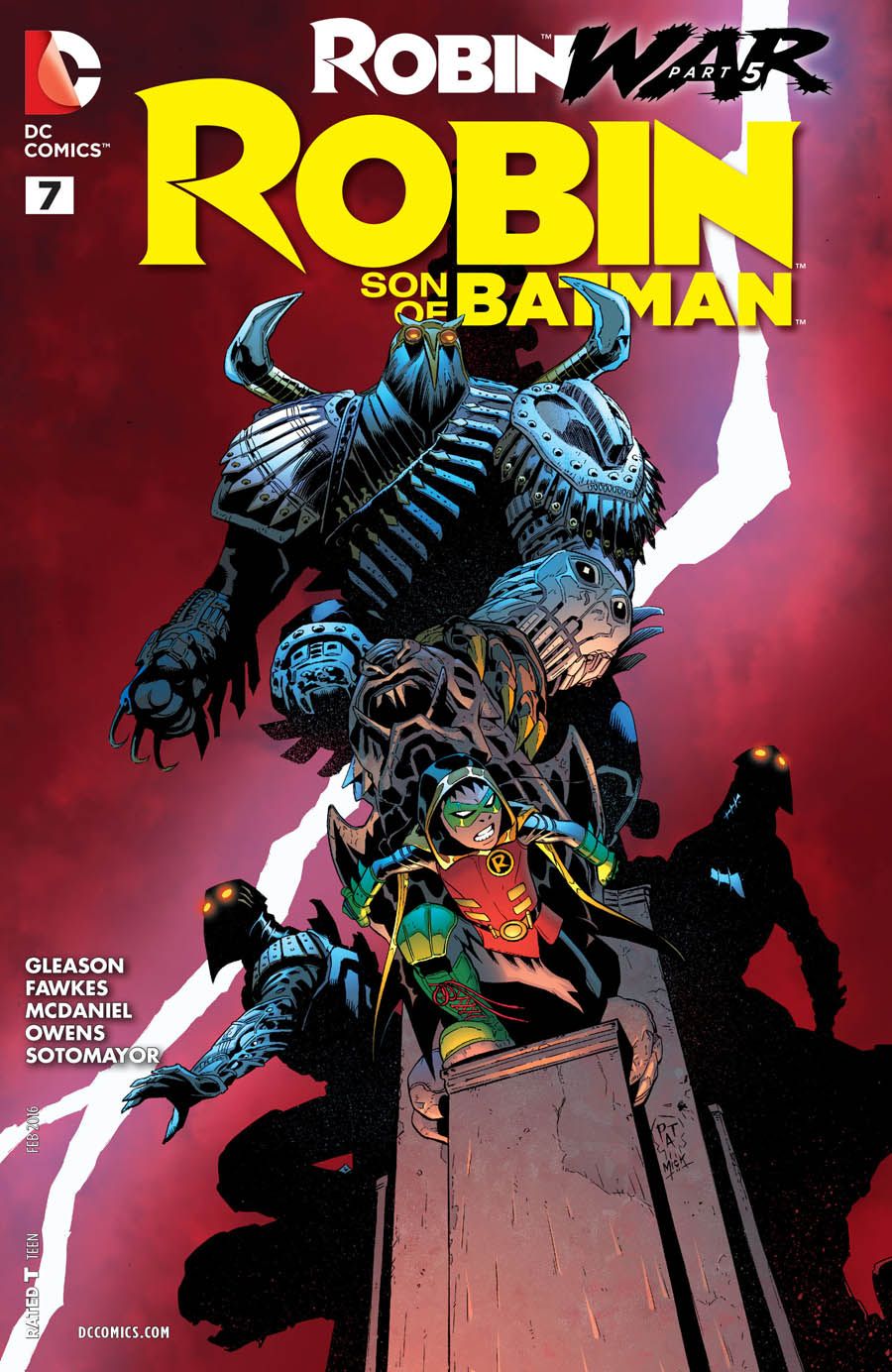After such a strong start, the "Robin War" storyline has been losing steam, and it's never been more apparent than in "Robin: Son of Batman" #7. Patrick Gleason, Ray Fawkes, Scott McDaniel and Andy Owens position all the characters for the big conclusion in "Robin War" #2, but execution of that directive feels somewhat inelegant.
Almost all of "Robin: Son of Batman" #7 can be categorized as one of two things: fighting or running. A lot of the book follows up from the previous chapter's cliffhanger, where the assembled Robins were attacked by a group of Talons from the Court of Owls. There's also a literal moving of the pieces going on here, as the characters try and confront of the Court of Owls once and for all. The problem is, neither one of these is compelling. Almost all of the fight could be summed up as characters scattering around the page. There's little here that stands out, as characters shout exposition about the Talons to one another, and otherwise run and punch and kick some more.
Even when the plot kicks in, it feels very jumbled. It's never clear what Riko recognizes from her "Gotham Academy" #13 stint. Is it a hole in the ground? The Talons? (If the latter, why isn't it until after the battle that she mentions recognizing them?) It feels incredibly out of the blue, and the sprint to the Academy at that point is a tenuous line from one point to the next. Similarly, Red Hood comments that he doesn't like it when Damian runs off; it's jarring because we don't actually see that moment happen, with it occurring literally in-between pages. This is a comic that genuinely feels like a page or two was accidentally left out, one which provided a needed sequence that would have smoothed out the story.
McDaniel and Owens' run as the artists on "Nightwing" remains a superhero classic, but the art is a mixed bag here. As the Robins and Talons fall after the explosion, the physics on display are all over the place, at times looking almost like everyone's falling up rather than down. None of the action sequences are easy to follow, which is frustrating because McDaniel and Owens' past work had them much more adept with characters leaping through the air. Even the more static scenes, like he one in the Court of Owl's hideout, are hard to follow; the machinery the reader sees first is displayed at such a strange angle that it's puzzling as to why the characters are worried.
I expected much more from "Robin: Son of Batman" #7; the creators involved are normally much better than this, and this storyline had such a strong opening. Maybe things will right themselves in the big conclusion, but -- for now -- "Robin War" has become a series of diminishing returns.

